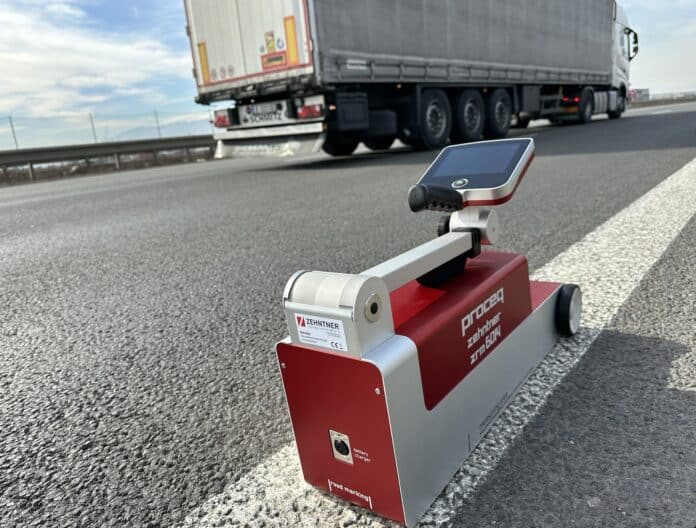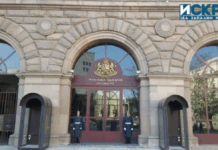
A team from the European Transport Policy Centre (ETPC) has checked the condition of the newly laid road markings on the Northern Expressway. As a reminder, the markings were completely renewed in October 2023. The retroreflectivity has been checked with a reflectometer. The method of testing was by check samples with a certified instrument every each kilometre. All four lines (end of to the dividing stripe, centerline – 2 pcs. and end of to the emergency stop lane) were measured to verify the current condition of the marking.
The survey was carried out both in the direction of the r. Marble towards the Blvd. “Botevgradsko shose as well as from Marmor Blvd. „Botevgradsko shose“ towards the village of Marram. Marble. The measurements have shown that in more than 70% of the surveyed sections the road markings do not meet the minimum requirements set out in Regulation No. 2 of the Ministry of Regional Development of the Republic of Bulgaria of 2001 on road markings. In accordance with the standards laid down in Regulation No 2, it is currently required by Article 7(8) and (9) in conjunction with paragraph 4 of the same Article that the minimum requirements for the daytime visibility of road markings, expressed in terms of the brightness factor Qd at the end of the operating period according to BS EN 1436, correspond to class Q3.
With regard to the night visibility of road markings, expressed by the retro-reflectance in dry pavement, Rl shall correspond to R3 or according to BDS EN 1436.
The control samples carried out have shown that the daytime visibility expressed by the coefficient Qd does not meet the minimum requirements. This conclusion is also made taking into account the known ongoing pollution in the winter period. The measurement found that the road markings were below the permissible standards even for the end of service period or about 25% below the minimum requirements.
With regard to the night visibility coefficient, the situation is extremely worrying. The measurements carried out revealed that the reflective beads were missing, damaged or completely missing. This defect occurs when a lesser amount of paint is applied and then the beads do not sink sufficiently. In order not to peel off during operation, the pearls should on average have sunk about 60%. The measured values show that the marking does not meet the nighttime retroreflectivity requirements, being about 50% below the minimum allowable values.
For the purposes of this inspection the end of life factors have been taken, which is not particularly correct given that the road markings were laid in October 2023. If we look at the requirements for road markings at the beginning of the operational period then it will be found that this marking is particularly poor quality and outside any standards. It is the view of the ECTP that the Highway Authority should answer whether any control measurements were taken by the Institute of Roads and Bridges when the contractor handed over the site and if so, what were the results of these measurements? Should the Road Infrastructure Agency (RIA) also answer whether they paid for this marking and if so, will penalties be imposed on the contractor?
The conclusion of the inspection carried out shows that the road marking laid is out of service only 3 months after it was laid and does not actually meet the requirements of Regulation No 2. It should be recalled that the warranty for such works is 2 years for cold spray plastic, such as that laid on the Northern Expressway. It is logical to ask the following question:
“If the marking does not meet the standards until about three months after it was laid, what will happen at the end of next summer or before the next winter season?”
Three months! Is that the life expectancy of road markings in Bulgaria? The ECTP expects the RIA to commission a warranty restoration of the markings on this site. The Prosecutor General has been informed of the findings of the study in order to carry out an investigation under his jurisdiction.






